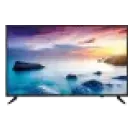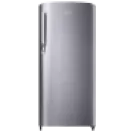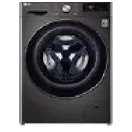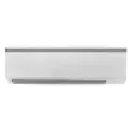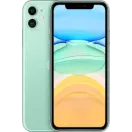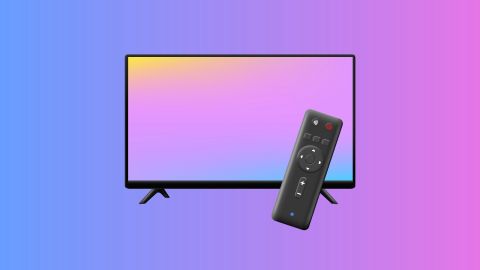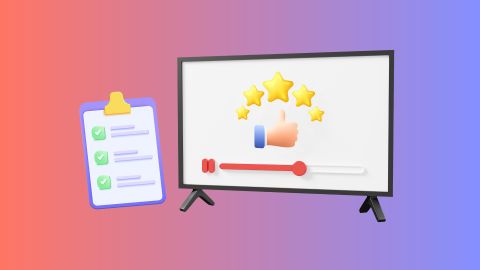Browse a variety of HDMI and SDI options on Bajaj Mall. Alternatively, visit our partner stores to discover a wide selection of various renowned brands. Visit the nearest Bajaj Finserv partner store and explore the wide range of options available. Select the TV that suits your preferences and convert its cost into Easy EMIs. You can choose to repay it in a convenient tenure of up to 60 months. This financing solution from Bajaj Finserv is available on 1 million products.
3 min
4-Feb-2025
HDMI and SDI are two widely used video transmission technologies, each catering to different needs. HDMI is the goto choice for home entertainment, gaming consoles, and personal devices, delivering high-quality audio and video through a single cable. It supports resolutions up to 8K and features like HDR and surround sound. SDI, on the other hand, is built for professional use, offering long-distance transmission with robust signal integrity.
Browse a variety of HDMI and SDI options on Bajaj Mall. Alternatively, visit our partner stores to discover a wide selection of various renowned brands. Visit the nearest Bajaj Finserv partner store and explore the wide range of options available. Select the TV that suits your preferences and convert its cost into Easy EMIs. You can choose to repay it in a convenient tenure of up to 60 months. This financing solution from Bajaj Finserv is available on 1 million products.
Browse a variety of HDMI and SDI options on Bajaj Mall. Alternatively, visit our partner stores to discover a wide selection of various renowned brands. Visit the nearest Bajaj Finserv partner store and explore the wide range of options available. Select the TV that suits your preferences and convert its cost into Easy EMIs. You can choose to repay it in a convenient tenure of up to 60 months. This financing solution from Bajaj Finserv is available on 1 million products.
Main difference between HDMI and SDI
HDMI (HighDefinition Multimedia Interface) and SDI (Serial Digital Interface) are both used for transmitting high-quality audio and video, but they serve different purposes. The primary difference lies in their application—HDMI is commonly used for consumer electronics like televisions and gaming consoles, whereas SDI is a professional grade standard designed for broadcasting and video production.
If your HDMI connection is affecting your TV’s display, you might experience flickering, black screens, or signal loss. Understanding common TV screen issues can help diagnose and fix such problems efficiently.
One of the key advantages of HDMI is its ability to carry both audio and video through a single cable, reducing clutter and simplifying setup. Additionally, it supports high resolutions, including 4K and 8K, as well as advanced audio formats like Dolby Atmos and DTS:X. With multiple versions available, HDMI continues to evolve, offering features like higher refresh rates, lower latency, and improved colour accuracy. Whether for entertainment or professional use, HDMI remains the standard for seamless multimedia connectivity.
SDI supports high definition video formats, including 720p, 1080p, and even 4K in newer versions like 12GSDI. One of its key advantages is its ability to deliver uncompressed video with low latency, making it ideal for real-time applications. If your SDIconnected device is experiencing connectivity issues, checking out Vu TV troubleshooting can help resolve potential signal disruptions or compatibility concerns.
SDI, on the other hand, is designed for professional use, offering superior durability, longer cable runs, and robust signal integrity. It is commonly used in broadcasting studios, live event production, and surveillance systems. If you require a simple, plug-and-play solution for everyday use, HDMI is the better option. However, for professional setups that demand reliability over long distances, SDI is the preferred standard. Understanding your specific needs will help in selecting the right technology for seamless multimedia transmission.
Alternatively, if you are looking to buy a new TV that supports HDMI or SDI connectivity, visit the nearest Bajaj Finserv partner store and explore the wide range of options available. Select the TV that suits your preferences and convert its cost into Easy EMIs. You can choose to repay it in a convenient tenure of up to 60 months. This financing solution from Bajaj Finserv is available on 1 million products.
| Feature | HDMI | SDI |
| Primary use | Home entertainment, gaming, and personal devices | Broadcasting, live streaming, and professional video production |
| Cable length | Limited (up to 15 metres without signal loss) | Can extend over 100 metres |
| Connector type | 19 pin connector | BNC connector |
| Signal type | Uncompressed digital audio and video | Uncompressed digital video (audio optional) |
| Durability | Less robust | Highly durable and suitable for rugged environments |
If your HDMI connection is affecting your TV’s display, you might experience flickering, black screens, or signal loss. Understanding common TV screen issues can help diagnose and fix such problems efficiently.
What is HDMI
HDMI (HighDefinition Multimedia Interface) is a widely used digital connection standard for transmitting high-quality video and audio between devices. It is commonly found in TVs, gaming consoles, projectors, and home theatre systems. Unlike older analogue connections, HDMI delivers uncompressed digital signals, ensuring superior clarity and performance.One of the key advantages of HDMI is its ability to carry both audio and video through a single cable, reducing clutter and simplifying setup. Additionally, it supports high resolutions, including 4K and 8K, as well as advanced audio formats like Dolby Atmos and DTS:X. With multiple versions available, HDMI continues to evolve, offering features like higher refresh rates, lower latency, and improved colour accuracy. Whether for entertainment or professional use, HDMI remains the standard for seamless multimedia connectivity.
Categories of HDMI cables
HDMI cables come in different categories, each designed for specific performance requirements. The main types include:- Standard HDMI cable: Suitable for resolutions up to 1080i, commonly used for basic home theatre setups.
- High speed HDMI cable: Supports 1080p, 4K at 30Hz, and features like 3D and deep colour, making it ideal for gaming and streaming.
- Premium high speed HDMI cable: Designed for 4K at 60Hz, HDR, and expanded colour ranges, ensuring high-quality performance.
- Ultra-high-speed HDMI cable: Supports up to 8K resolution, higher frame rates, and reduced electromagnetic interference for the best possible experience.
Types of HDMI connectors
HDMI connectors come in different sizes, designed for various applications and devices:- Type A (Standard HDMI) – The most common connector used in TVs, gaming consoles, and Bluray players.
- Type C (Mini HDMI) – Found in portable devices like cameras and tablets, offering a compact version of the standard HDMI connector.
- Type D (Micro HDMI) – A smaller variant designed for smartphones, GoPros, and compact media devices.
- Type E (Automotive HDMI) – Used in vehicle multimedia systems, featuring a secure locking mechanism to prevent disconnection due to vibrations.
What is SDI
SDI (Serial Digital Interface) is a professional grade digital video transmission standard widely used in broadcasting, film production, and live event streaming. Unlike HDMI, which is consumer focused, SDI is designed for long-distance transmission and operates using coaxial cables with BNC connectors. This makes it highly durable and less prone to signal degradation over long distances.SDI supports high definition video formats, including 720p, 1080p, and even 4K in newer versions like 12GSDI. One of its key advantages is its ability to deliver uncompressed video with low latency, making it ideal for real-time applications. If your SDIconnected device is experiencing connectivity issues, checking out Vu TV troubleshooting can help resolve potential signal disruptions or compatibility concerns.
HDMI vs. SDI: How to choose the right type for you
Choosing between HDMI and SDI depends on the intended application and environment. HDMI is the goto choice for home entertainment, gaming, and consumer electronics due to its ease of use and widespread compatibility. It provides high-quality audio and video transmission but has limitations in cable length and durability.SDI, on the other hand, is designed for professional use, offering superior durability, longer cable runs, and robust signal integrity. It is commonly used in broadcasting studios, live event production, and surveillance systems. If you require a simple, plug-and-play solution for everyday use, HDMI is the better option. However, for professional setups that demand reliability over long distances, SDI is the preferred standard. Understanding your specific needs will help in selecting the right technology for seamless multimedia transmission.
Alternatively, if you are looking to buy a new TV that supports HDMI or SDI connectivity, visit the nearest Bajaj Finserv partner store and explore the wide range of options available. Select the TV that suits your preferences and convert its cost into Easy EMIs. You can choose to repay it in a convenient tenure of up to 60 months. This financing solution from Bajaj Finserv is available on 1 million products.
Explore HDMI vs. SDI cables on EMI with Bajaj Finserv
Whether you need a high-quality connection for home entertainment or professional setups, you can find the right option with flexible financing. Once you finalise your choice, visit a Bajaj Finserv partner store to make your purchase. With financing options from Bajaj Finserv, you can get your preferred model without financial strain. Plus, flexible repayment plans let you pay in easy EMIs, making it a budget-friendly choice. Bajaj Finserv also provides financing on a wide range of electronics.Benefits of purchasing with Bajaj Finserv’s EMI options
- Budget-friendly pricing: Get competitive prices on HDMI and SDI devices at Bajaj Finserv partner stores, making high-quality purchases more affordable.
- Flexible EMIs: Spread the cost over convenient Easy EMIs with Bajaj Finserv’s financing, ensuring a hassle-free buying experience.
- Zero down payment: Select HDMI and SDI products are available with zero down payment, eliminating the need for an upfront expense.
- Extensive selection: Choose from a wide range of HDMI and SDI devices at Bajaj Finserv partner stores to suit your specific needs.
- Free home delivery: Enjoy complimentary home delivery on select HDMI and SDI devices, making your purchase even more convenient.
Televisions
TVs by size
TVs by budget
TV comparisons
Bajaj Finserv App for all your financial needs and goals
Trusted by 50 million+ customers in India, Bajaj Finserv App is a one-stop solution for all your financial needs and goals.
You can use the Bajaj Finserv App to:
Apply for loans online, such as Instant Personal Loan, Home Loan, Business Loan, Gold Loan, and more.
You can use the Bajaj Finserv App to:
Apply for loans online, such as Instant Personal Loan, Home Loan, Business Loan, Gold Loan, and more.
- Explore and apply for co-branded credit cards online.
- Invest in fixed deposits and mutual funds on the app.
- Choose from multiple insurance for your health, motor and even pocket insurance, from various insurance providers.
- Pay and manage your bills and recharges using the BBPS platform. Use Bajaj Pay and Bajaj Wallet for quick and simple money transfers and transactions.
- Apply for Insta EMI Card and get a pre-approved limit on the app. Explore over 1 million products on the app that can be purchased from a partner store on Easy EMIs.
- Shop from over 100+ brand partners that offer a diverse range of products and services.
- Use specialised tools like EMI calculators, SIP Calculators
- Check your credit score, download loan statements, and even get quick customer support—all on the app.
Frequently asked questions
Which is better, SDI or HDMI?
The choice between SDI and HDMI depends on the use case. HDMI is ideal for home entertainment, gaming, and personal devices, offering high-quality audio and video in a single cable. SDI, on the other hand, is designed for professional use, providing long-distance transmission, durability, and reliability in broadcasting and live productions.
What are the benefits of SDI video?
SDI offers superior signal stability, making it ideal for professional environments like film production and live streaming. It supports long-distance transmission without quality loss and is built to withstand harsh conditions, ensuring reliable performance in high-pressure setups.
Can SDI transmit 4K?
Yes, newer versions like 6GSDI and 12GSDI can transmit 4K video at high frame rates. These advanced SDI standards enable uncompressed video transfer over long distances, making them a preferred choice for high-end broadcasting and professional video production.
What is SDI to HDMI?
SDI to HDMI refers to a converter that allows SDI signals to be displayed on HDMIcompatible devices. This is useful for connecting professional broadcasting equipment to consumer grade displays, enabling seamless integration between different video formats.
Which is better, SDI or HDMI?
The choice between SDI and HDMI depends on the use case. HDMI is ideal for home entertainment, gaming, and personal devices, offering high-quality audio and video in a single cable. SDI, on the other hand, is designed for professional use, providing long-distance transmission, durability, and reliability in broadcasting and live productions.
Show More
Show Less
